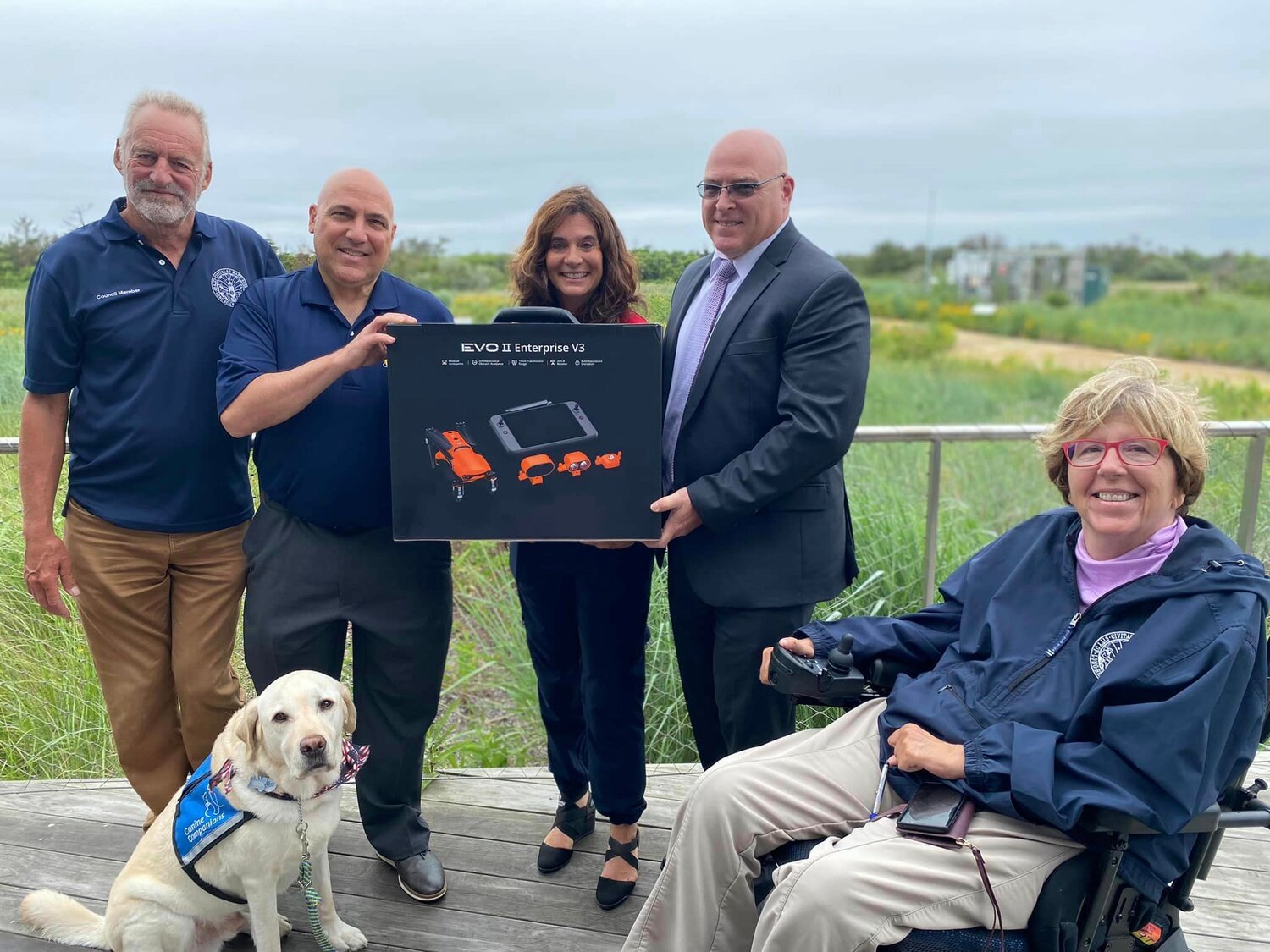Spotting sharks early is about to get much easier in Long Beach
Going to the beach is the summer tradition in Long Beach. Swimmers and surfers are everywhere.
But with the fun comes some risk. Rip currents have been an issue, and earlier this month, County Executive Bruce Blakeman announced safety measures to make beachgoers more aware of their dangers. Recently, another threat has been increasingly prevalent: sharks.
Gov. Kathy Hochul has taken the lead in the state’s response to this summer’s recent surge of shark sightings.
On Shark Awareness Day, July 14, it was announced that 60 drones would be deployed across Long Island, New York City and Westchester County to help spot sharks. Long Beach lifeguards received one of the drones, which they will make part of their shark-sighting routine when training has been completed. The police department currently has the device at its headquarters.
“We have added this eye in the sky,” Hochul said of the overall deployment. “These new drones will allow us to scan the water and help local governments across Long Island and New York City keep local beaches safe for all.”
Richard Borawski, Long Beach’s chief of lifeguards, said that a protocol is triggered to ensure safety when a beachgoer reports seeing a fin in the water. The lifeguards on duty scan the water visually for any unusual activity, and then other guards, equipped with high-powered binoculars, are dispatched to the location to validate the sighting.
If a fin is confirmed to be nearby, there is a radio call to launch personal watercraft, which guards maneuver into a grid formation in the area where the fin was spotted for a closer investigation. This serves as the second confirmation. If it backs up the initial binocular sighting, the beach is promptly red-flagged, which means the entire stretch of sand is shut down. The process is designed to prioritize beachgoers’ well-being while ensuring a prompt and efficient response to potential threats.
The new drone won’t replace the current safety protocol, but rather will serve as an addition to it. “So now it’s just a quicker way for us to identify, and we’ll still continue the protocols that we do,” Borawski said.
The battery-powered drone, he explained, can maintain a flight pattern for 30 to 40 minutes on a single charge, and can be launched anytime, as needed. It includes advanced features such as thermal imagery.
Lifeguards are undergoing training to operate the drone, and Borawski’s goal is to have at least three or four guards trained within a week or two, so they can start using it as part of their regular safety routine.
“I think us having it, it’s going to put everybody’s comfort level a lot easier knowing that we have that capability on top of the jet skis and the high-powered binoculars,” he said. “It’s just another precaution. You can never be too safe. I love the fact that the city is taking advantage of (drones). They backed us 100 percent and tried to get whatever we needed.”
Borawski said that the future of shark safety in New York lies in educating people and raising awareness about the diverse marine life that inhabits the waters off our shores.
“I think that’s really the next step for the agencies — putting the word out that it’s their home and we just have to respect what goes on out there,” he said. “If you see a pod, you don’t swim near the pod. If you see anything that’s jumping out of the water, most likely it’s jumping out of the water for a reason. So stay clear of it. It’s about being aware. I think that’s really the message here. Maybe public awareness announcements would be good. The drone is just another added resource for us to use, and we’re excited to have it.”

 56.0°,
Overcast
56.0°,
Overcast 







